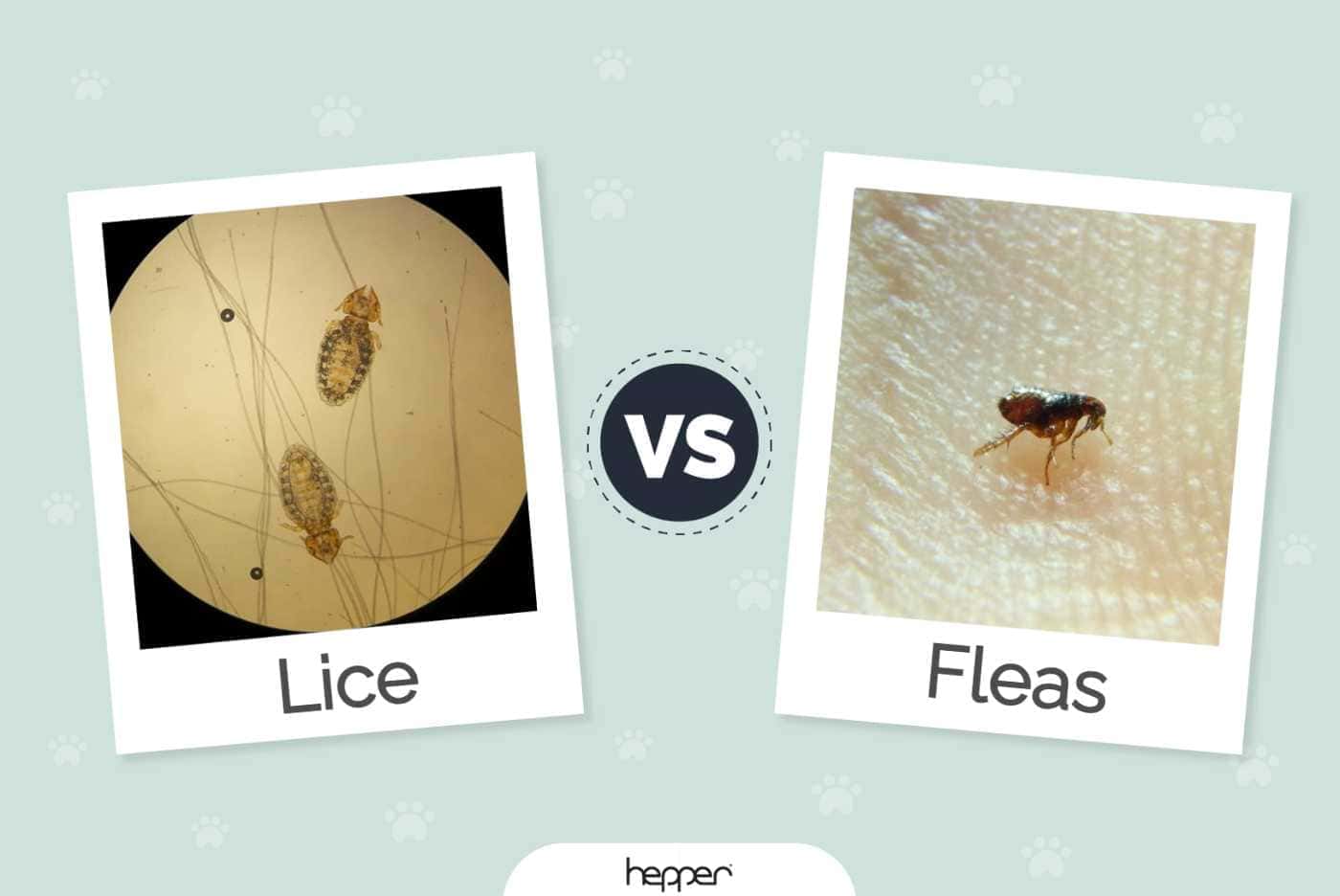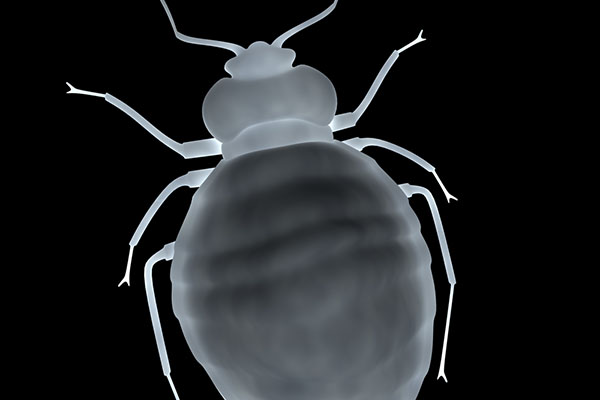Dog lice and fleas are two different types of parasites that infest dogs. They can be distinguished by examining the shape, color, and size of the parasites as well as the symptoms they cause in dogs.
When it comes to identifying external parasites in dogs, it is essential to recognize the difference between lice and fleas. Although they both cause skin irritation and discomfort in dogs, lice have a flat, elongated shape and are smaller than fleas, which have a rounded shape and are usually brown or black.
Additionally, lice move more slowly than fleas and are mainly found around the ears and anus of dogs. In contrast, fleas are more widespread and can be found all over a dog’s body, leaving behind traces of blood and dark flea dirt. Identifying the correct pest is crucial to treating and preventing re-infestation and maintaining a dog’s health.

Credit: www.hepper.com
Understanding The Difference Between Dog Lice And Fleas
Dog lice and fleas are parasites that can infest dogs. Lice are wingless insects with narrow, elongated body and feed on the dog’s blood. They lay eggs on the dog’s fur, which hatch in a week. Fleas are tiny, brownish-black insects, and can jump long distances.
Their life cycle includes an egg, larva, pupa, and adult stage. Fleas can cause itching, redness, and rashes on the dog’s skin. Lice infestation in dogs is relatively uncommon, but fleas are prevalent in warm and humid conditions. Both parasites can be treated with insecticides or other medications, and thorough cleaning of the dog’s environment is vital. If you suspect your dog has lice or fleas, consult your veterinarian immediately.
How To Identify The Difference Between Dog Lice And Fleas
Dog lice and fleas are both pesky parasites that cause discomfort for dogs. The difference between the two lies in their size and color. Fleas are smaller and dark brown while lice are larger and light brown. They differ in behavior as well – fleas move quickly while lice move slowly.
Fleas also tend to prefer the lower back and tail area, while lice are commonly found on the ears and head. Finally, they attach to different types of hair or fur – fleas prefer thicker fur while lice attach to thinner hair. By knowing these differences, you can better identify and treat your dog’s pest problem.
Possible Health Impacts Of Dog Lice And Flea Infestations
Dog lice and flea infestations are not only irritating, but they can also have serious health consequences for your furry friend. Skin irritation and constant itching are common symptoms, but they can also lead to secondary infections. Behavioral changes such as restlessness and loss of appetite may occur.
Some dogs can develop allergies to flea saliva and suffer from swelling, rashes, or hives. Lice infestations can cause anemia and weaken your dog’s immune response. Fleas and lice can transmit diseases such as tapeworms, spotted fever, or Lyme disease.
To prevent these health risks, regular grooming, cleaning bedding, and routine flea and tick medication are essential. Consult with a veterinarian if you suspect your dog has either of these pests.
Treatment Options For Dog Lice And Flea Infestations
Dog lice and fleas in your furry friend can not only cause discomfort but also serious health problems. Treatment options for dog lice and flea infestations include topical treatments, oral medications, and environmental control. Topical treatments include spot-on treatments, flea collars, and flea baths.
Oral medications can also be effective in treating these pests. It’s important to focus on environmental management as well, by regularly cleaning your pet’s bedding and vacuuming carpets and furniture. Flea infestations can quickly become a major problem, so it’s best to address the issue quickly and consistently. With proper treatment and management, your furry friend can be free of dog lice and fleas.
Prevention And Control Of Dog Lice And Flea Infestations
Effective prevention and control of dog lice and flea infestations require proper hygiene and regular grooming. Any infected dog should be treated immediately to prevent further spread. Year-round protection is key as these parasites thrive in warm, humid conditions. Environmental management is also crucial, with thorough cleaning and disinfecting of areas your dog frequently visits.
Regular grooming can aid in early detection, and prompt treatment is necessary to avoid a full-blown infestation. Maintaining a clean environment and practicing good hygiene and grooming habits help prevent and control dog lice and flea infestations.
FAQ For Dog Lice Vs Fleas Pictures
What Is The Difference Between Dog Lice And Fleas?
Dog lice and fleas are two separate parasites that can affect your pet. Lice are wingless insects that live and feed on your dog’s skin and fur. Fleas, on the other hand, are small, blood-sucking insects that feed on your pet’s blood and can cause itching and skin irritation.
How Do I Identify Dog Lice?
Lice look like small white or gray specks on your dog’s hair shaft. They can be distinguished from dandruff or dirt as they do not easily brush off. Severe lice infestations may cause your dog’s coat to look scruffy, and they may scratch frequently.
How Do I Identify Fleas On My Dog?
Fleas are small, dark brown insects that are about the size of a pinhead. They can be seen moving around on your dog’s fur, or you may notice small black dots on your dog’s skin or bedding, which is flea dirt or feces.
Can Dog Lice Be Transferred To Humans?
Dog lice are not known to transmit diseases to people. However, they can be transferred from dogs to humans through close contact with infected dogs. If you suspect your dog has lice, it is recommended to seek veterinary treatment.
How Can I Prevent My Dog From Getting Lice Or Fleas?
You can prevent lice and flea infestations in your dog by maintaining good hygiene, giving them regular baths, and using flea and tick-preventative medications. It is also essential to keep your home and yard clean and free from fleas and lice to prevent re-infestation.
Conclusion
After comparing the characteristics and pictures of dog lice and fleas, it’s easy to see how these pests can be mistaken for each other. However, understanding the differences is crucial to effectively treat and prevent infestations. While fleas are notorious for causing itchy bites and transmitting diseases, lice are mostly a nuisance and can cause hair loss and skin irritation.
Nevertheless, both can reproduce quickly and spread to other pets and even humans. Prevention and treatment of both lice and fleas involve regular grooming and cleaning of pets and their environment. Additionally, choosing the right product for treatment is essential.
Consulting with a veterinarian and following their recommendations is always the best course of action. Knowing the signs, symptoms, and differences between dog lice and fleas can help pet owners protect their furry friends and keep them healthy and happy.



